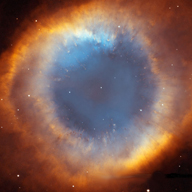| Earth |
 |
For most of
recorded history the Earth was the
center of the universe and never moved. The constellations
were named and stories were told about them. The Greek, Aristotle, wrote in the third century
BC that the Earth was a sphere because different stars
could be seen as you move north and south, and the
shadow of the Earth on the moon during an eclipse
was curved. A hundred or so years later, Eratosthenes used the length of the shadow cast by the sun to determine
the circumference of the Earth.
In the second century AD Ptolemy gathered star catalogues and astronomical writings. Astronomers were called astrologers at the time and tried to predict events using the stars. Ptolemy proposed that the solar system was like a huge carousel with the Earth as the center and the planets, stars, sun and moon riding where the horses would be.
After about 1400 years Nicolaus Copernicus used mathematics to place the sun in the center of the 'carousel' to shed light on how the sun, planets and stars appear to move. Johannes Kepler expanded on the idea using eliptical orbits to predict planetary motion.
Soon after the invention of the refracting telescope, Galileo Galilei used one to view craters on the moon and watch the moons of Jupiter circle the planet. This validated the idea that the sun was in the center of the solar system and the Earth orbiting it. In addition, Isaac Newton invented the reflecting telescope that used a mirror instead of a glass lens and proposed the Theory of Gravity which explained how the planets were held in place.
Quick Links:
The Sun | Mercury | Venus | Earth | The Moon
Mars | Jupiter | Saturn | Uranus | Neptune | Pluto
